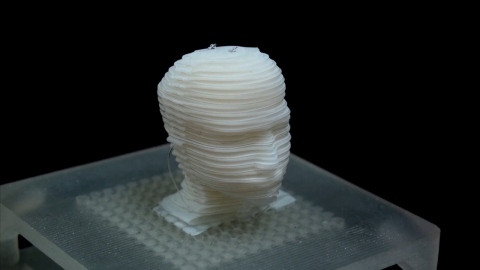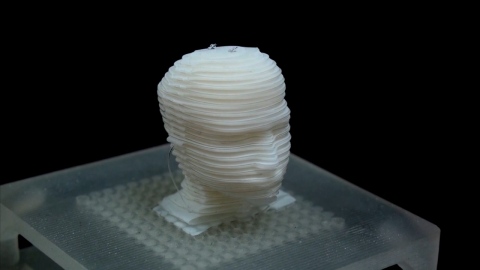SEOUL, South Korea--(BUSINESS WIRE)--Soft robotics is an emerging field to use compliant materials such as silicone, cloth, balloons, and paper for enhancing the flexibility and adaptability of robots and achieving smooth and natural movements. Recently, Dr. Sehyuk Yim in Korea Institute of Science and Technology (KIST) and his colleagues in US developed a new technology to make 3D soft robots from plastic paper designed by geometric algorithms, and showcased audio-animatronics using world famous opera songs and movie monologues.
The underlying philosophy of this research is to democratize future robot technologies for every people. When developing one robot, even experienced roboticists need at least several weeks for designing required mechanisms and robot structures and configuring a number of mechanical and electrical devices. Even though 3D printing technology has significantly reduced the manufacturing time and cost, all we still have to print dozens of individual parts, and then assemble them one-by-one. Above all, this is very expensive in cost.
Dr. Yim’s team investigated how to more simplify the entire process with the design paradigm of soft robotics. To this end, they invented a new 3D fabrication mechanism called ‘additive self-folding’ and design process for the 2D fold pattern to connect all slices of the robot. Finally, they implemented smooth, natural and lifelike motion of the soft robots using embedded tendons.
Dr. Yim stated that “This result is very impactful, because soft robotics now widens its application areas beyond wearable robots and/or medical robots to the art and culture technologies in which the film and entertainment industries are interested. Also, merging the soft animatronics with emerging artificial intelligence will bring forth a wide range of changes on personal robots as well as human-robot interaction field, we think.”
This research was conducted in collaboration with robotics groups in MIT, UPENN and Univ. of York (UK). The paper is published online on ‘The International Journal of Robotics Research’(IF : 5.30, JCR top : 5.76 %).




